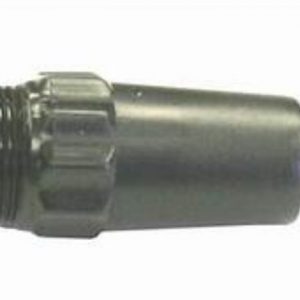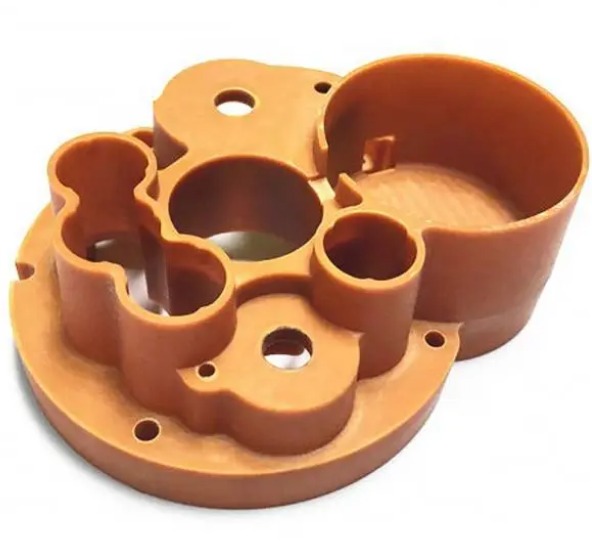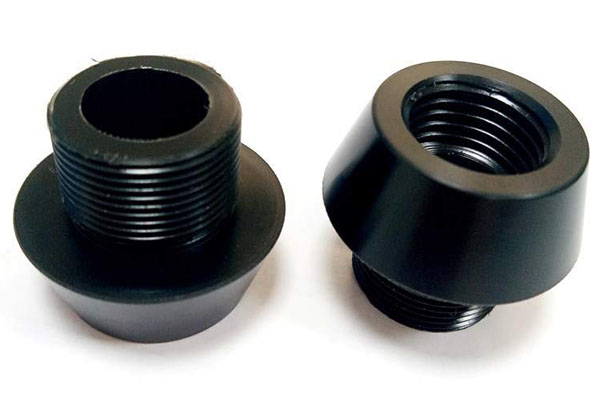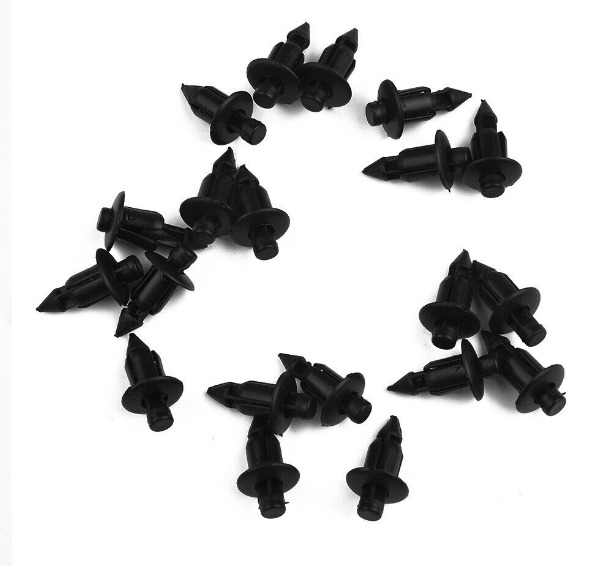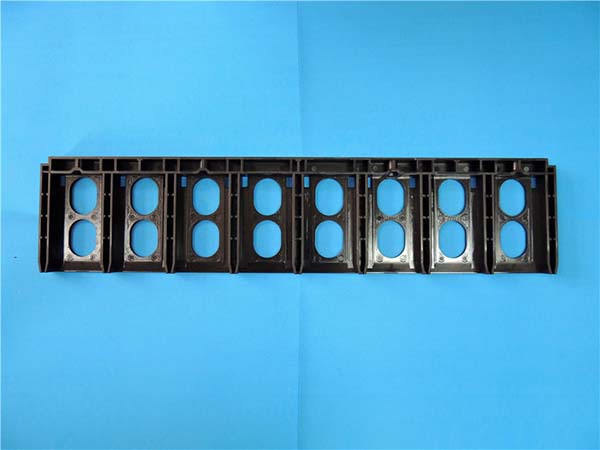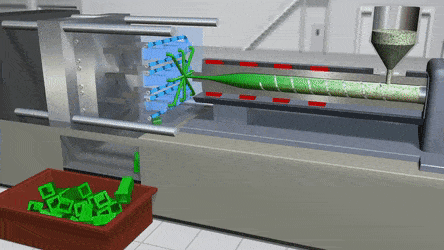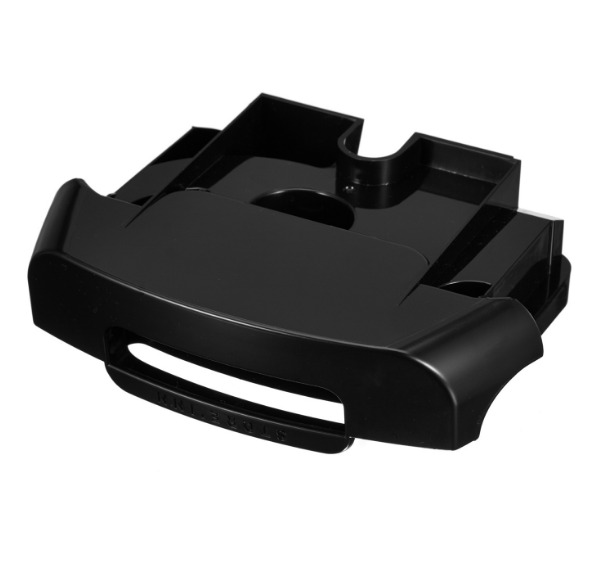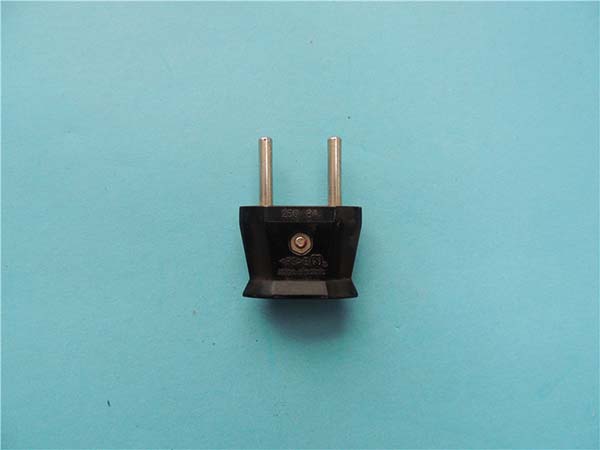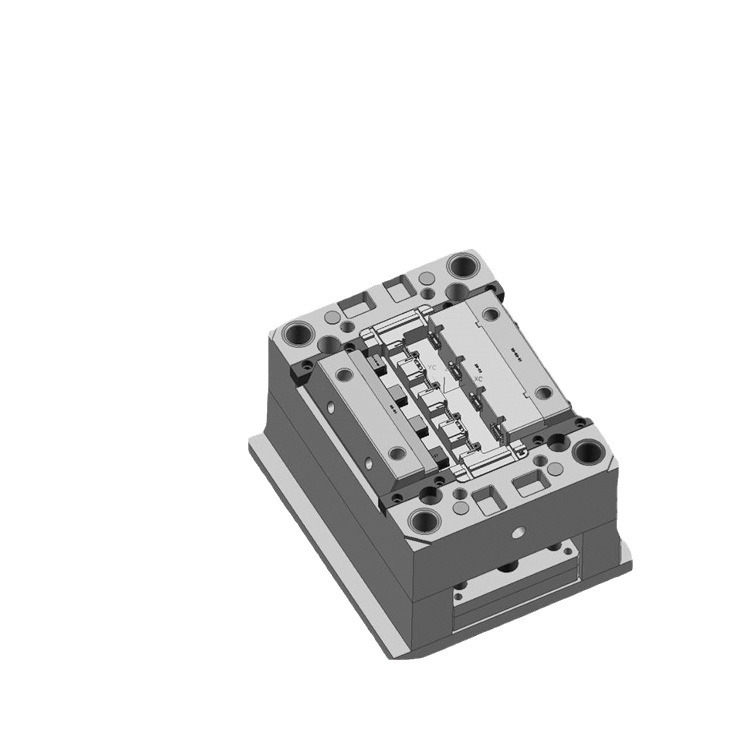What is Multi - Shot Molding?
Multi - Shot Molding, also known as multi - component injection molding, is an advanced manufacturing process that enables the combination of multiple materials or different - colored materials within a single molding operation to create complex and high - performance products. This technique goes beyond traditional single - material injection molding, offering enhanced functionality, design flexibility, and cost - effectiveness in the production of various items.
Key Characteristics
- Material Diversity: One of the most significant features of multi - shot molding is the ability to use different types of plastics, elastomers, or even insert metals into the same product. For example, in the production of a smartphone case, a rigid plastic can be used for the main structure to provide strength and protection, while a soft elastomer is added around the edges for better grip and shock absorption.
- Color Integration: It allows for the seamless combination of multiple colors in a single product. This is highly desirable in consumer goods, such as toys and electronics, where aesthetics play a crucial role. A children's toy can be molded with multiple bright colors in one go, eliminating the need for additional painting or decoration processes.
Applications Across Industries
- Automotive Industry: Multi - shot molding is extensively used in the automotive sector. Components like interior dashboard panels, door handles, and steering wheels often require a combination of hard and soft materials. For instance, a steering wheel may have a hard plastic core for structural integrity and a soft, rubber - like outer layer for a comfortable grip and better control. In fact, according to a study by the Society of Plastics Engineers, around 30% of automotive interior components are now produced using multi - shot molding techniques.
- Electronics Industry: In the production of electronic devices, multi - shot molding is used to create parts such as connectors, keypads, and housings. A connector might have a conductive metal insert molded within a plastic body to ensure reliable electrical connections. This process helps in reducing assembly time and improving the overall performance and durability of the electronic product.
- Medical Industry: Medical devices also benefit from multi - shot molding. Syringe components, for example, can be made with a hard plastic barrel and a soft elastomer plunger seal. The ability to combine materials with different properties in one step ensures better functionality and sterility, which are crucial in medical applications.
The Working Mechanism of Multi - Shot Molding
Step - by - Step Process
- Mold Preparation: The process begins with a specialized multi - shot mold. This mold is designed with cavities and channels to accommodate the different materials and the movement required during the molding process. For example, in a two - shot molding for a toothbrush, the mold will have a section for the hard plastic handle and another for the soft bristles - holding part. The mold is first cleaned and pre - heated to an optimal temperature. This pre - heating helps in the even flow of the molten materials and ensures better adhesion between the different layers.
- First Material Injection: The first material, typically a base or structural material, is fed into the injection unit. The injection unit melts the plastic material to a viscous, molten state. For instance, if the product is a consumer electronics housing, the first material might be a high - strength engineering plastic like ABS (Acrylonitrile Butadiene Styrene). The molten plastic is then injected under high pressure into the mold cavity. This fills the initial shape of the product, forming the foundation or the main body.
- Mold Rotation or Movement: After the first injection, and once the first material has started to solidify slightly (but is still in a semi - molten state for better bonding), the mold undergoes a rotation or movement. In a rotary - table multi - shot molding machine, the mold is rotated on a turntable. In a shuttle - type machine, the mold moves linearly. This movement positions the partially - formed product into the path of the second injection unit.
- Second (and Subsequent) Material Injection: The second material, which could be a different plastic, an elastomer, or even a metal insert (in insert molding, which is a type of multi - shot molding), is then injected into the mold. For example, in the production of a smartphone button, the first injection might be a hard plastic for the button's structure, and the second injection could be a soft, conductive rubber for the button's surface to provide a better tactile feel and electrical conductivity. If there are more than two materials, the process of mold movement and material injection is repeated for each additional material.
- Cooling and Ejection: Once all the materials have been injected, the mold is cooled. Cooling can be achieved through water - cooled channels within the mold. As the materials cool and solidify completely, they form a single, integrated product. Finally, the finished product is ejected from the mold using ejector pins or other ejection mechanisms.
Here is a simple diagram to illustrate the multi - shot molding process:
| Step | Description |
| 1 | Mold Preparation: Clean and pre - heat the multi - shot mold. |
| 2 | First Material Injection: Inject the first molten material into the mold cavity. |
| 3 | Mold Rotation/Movement: Rotate or move the mold to position for the next injection. |
| 4 | Second (and Subsequent) Material Injection: Inject the additional materials. |
| 5 | Cooling and Ejection: Cool the mold and eject the finished product. |
Key Components and Their Functions
- Multiple Injection Units: Multi - shot molding machines are equipped with two or more injection units. Each injection unit is responsible for melting and injecting a specific material. For example, in a three - shot molding process for a complex automotive interior part, one injection unit might handle a rigid polypropylene for the main structure, another could handle a soft thermoplastic elastomer for a cushioning layer, and the third might be for a decorative or wear - resistant material. The injection units can be controlled independently in terms of injection speed, pressure, and temperature, allowing for precise control over the material flow.
- Special Molds: The molds used in multi - shot molding are highly specialized. They are designed with multiple cavities, slides, and cores to facilitate the injection of different materials and the creation of complex geometries. For example, a mold for a medical device with a flexible tip and a rigid body will have separate cavities for the two materials and a mechanism to move the partially - formed parts within the mold during the different injection stages. The mold's design also ensures proper alignment of the materials and good adhesion between the layers.
- Rotation or Movement Devices: These are crucial for re - positioning the mold or the partially - formed product during the multi - shot process. In rotary - table machines, the turntable rotates the mold, usually in 180 - degree or 90 - degree increments, to bring the product in front of the different injection units. In shuttle - type machines, a linear movement system slides the mold from one injection station to another. This movement must be precise and repeatable to ensure consistent product quality.
Comparison with Other Molding Methods
Injection Molding
While multi - shot molding is a specialized form of injection molding, there are distinct differences between standard injection molding and multi - shot molding:
- Material Usage:
- Standard Injection Molding: Typically uses a single type of material in one injection process. For example, when manufacturing a simple plastic cup, only one type of plastic resin is injected into the mold.
- Multi - Shot Molding: Allows for the use of multiple materials, such as combining a hard plastic with a soft elastomer, or using different - colored plastics in a single product.
- Product Complexity:
- Standard Injection Molding: Can produce a wide range of products, from simple to moderately complex shapes. However, creating products with multiple distinct material properties or complex color combinations in a single piece is challenging. For instance, a standard injection - molded toy might have a single color and material.
- Multi - Shot Molding: Is designed for highly complex products. It can create products with integrated functions, like a toothbrush with a hard handle and soft bristles, or a smartphone case with a built - in anti - slip layer.
- Production Efficiency:
- Standard Injection Molding: Generally has a shorter cycle time for single - material products as there is only one injection step. This makes it suitable for high - volume production of simple parts.
- Multi - Shot Molding: Has a longer cycle time due to multiple injection steps and mold movements. But it reduces the need for post - assembly operations, which can be time - consuming and costly in the long run for complex products.
- Cost:
- Standard Injection Molding: The initial investment in equipment and molds is relatively lower, especially for simple molds. It is cost - effective for large - scale production of single - material products.
- Multi - Shot Molding: Requires more expensive equipment with multiple injection units and highly specialized molds. The higher upfront costs can be offset by reduced assembly costs and the ability to create high - value, integrated products.
Overmolding and Insert Molding
Overmolding and insert molding are related to multi - shot molding, but they have their own characteristics. Here is a comparison presented in a table:
| Aspect | Multi - Shot Molding | Overmolding | Insert Molding |
| Process Characteristics | Combines multiple materials or colors in a single molding operation through sequential injections and mold movements. | Involves molding a second material over a pre - formed part (substrate). The pre - formed part can be a different material or a previously molded component. | A process where a pre - fabricated component (such as a metal insert) is placed in the mold cavity before the injection of the plastic material. The plastic then encapsulates the insert. |
| Applicable Products | Ideal for products that require multiple functions or complex color combinations in one piece, like automotive interior components with soft - touch surfaces and hard structural parts, or multi - colored consumer electronics. | Suited for products that need to add a protective or functional layer to a pre - existing part. For example, adding a rubber grip to a plastic tool handle or a soft - touch coating to a plastic pen. | Used for products that need the strength or functionality of a non - plastic component integrated into a plastic part. Such as metal - reinforced plastic brackets in the automotive or aerospace industries. |
| Mold Requirements | Specialized molds with multiple cavities, slides, and cores to handle different materials and injection sequences. Molds often require precise alignment mechanisms for different injection steps. | Molds need to accommodate the pre - formed part and ensure proper placement for the overmolding material to bond correctly. They may have features to hold the substrate in place during the overmolding process. | Molds must have provisions for accurately positioning the insert within the cavity. There are requirements for ensuring the insert does not move during the injection of the plastic material. |
| Material Compatibility | Multiple materials need to be compatible in terms of adhesion, shrinkage rates, and processing temperatures to ensure a strong bond and a high - quality end - product. | The overmolding material must bond well with the substrate material. Considerations include the chemical compatibility and surface properties of both materials. | The insert material and the plastic material need to be compatible in terms of thermal expansion rates to prevent stress cracking or separation after molding. |
Advantages of Multi - Shot Molding
Enhanced Product Functionality
Multi - shot molding allows manufacturers to combine materials with different properties in a single product, significantly enhancing its functionality. For example, in the production of power tools, a multi - shot molding process can be used to create a grip that combines a hard, durable plastic for structural integrity and a soft, anti - slip elastomer for a comfortable and secure hold. This combination not only improves the user experience but also reduces the risk of the tool slipping during operation, enhancing safety. In the medical field, multi - shot molded catheters can have a flexible tip for easy insertion and a rigid body for better control and stability, providing a more effective medical device. According to a study by the Plastics Industry Association, products made through multi - shot molding often have a 20 - 30% improvement in functional performance compared to single - material products.
Cost - effectiveness in the Long Run
Although the initial investment in multi - shot molding equipment and molds is higher than that of traditional single - shot injection molding, it can be more cost - effective in the long term. One of the main cost - saving factors is the reduction in assembly operations. By integrating multiple components into a single, multi - material product during the molding process, manufacturers can eliminate the need for post - molding assembly, which can be labor - intensive and time - consuming. For instance, a consumer electronics product that would typically require multiple parts to be assembled can be produced as a single, integrated unit using multi - shot molding. This not only saves on labor costs but also reduces the risk of errors during assembly. Additionally, the higher production efficiency of multi - shot molding, due to its ability to produce complex parts in one step, can lead to lower per - unit production costs over a large production run. Research shows that for products with more than three components that would otherwise be assembled separately, multi - shot molding can reduce production costs by up to 40%.
Design Flexibility
Multi - shot molding offers unparalleled design flexibility. Designers can create products with complex geometries, multiple colors, and a combination of different materials, all in one seamless piece. This flexibility enables the creation of unique and innovative products that stand out in the market. For example, in the toy industry, multi - shot molding allows for the production of toys with intricate designs and multiple colors, enhancing their visual appeal. In the automotive industry, designers can use multi - shot molding to create interior components with a soft - touch surface on a hard plastic base, providing both comfort and durability. The ability to combine different materials also opens up new possibilities for product design, such as creating lightweight yet strong parts by using a combination of high - strength plastics and lightweight metals. This design flexibility gives manufacturers a competitive edge, allowing them to meet the evolving demands of consumers and industries.
Yigu Technology's Perspective
As a non - standard plastic metal products custom supplier, Yigu Technology highly values the application of multi - shot molding in its business. Multi - shot molding enables us to meet the diverse needs of our clients with precision. For example, in producing complex plastic - metal integrated components, we can combine different materials through multi - shot molding to ensure both the strength of the metal and the flexibility of the plastic. This not only improves the product quality but also enhances our competitiveness in the market. By leveraging this advanced technology, we can offer one - stop solutions to our customers, reducing their overall production costs and shortening the supply chain. It allows us to create innovative products that stand out in the market, meeting the high - end demands of various industries such as automotive, electronics, and medical.
FAQ
What types of products are most suitable for Multi - Shot Molding?
Products that require a combination of different materials or colors are highly suitable for multi - shot molding. Automotive interior components such as steering wheels, dashboards, and door handles benefit from this process. For example, a steering wheel can have a hard plastic core for strength and a soft rubber - like outer layer for a better grip. Electronic device housings often need to combine a rigid outer shell with soft - touch or shock - absorbing elements, which multi - shot molding can achieve. Medical devices like syringes, where a hard barrel and a soft plunger seal are required, are also well - suited. The ability to integrate different functions in one piece makes multi - shot molding ideal for these complex products.
How does Multi - Shot Molding affect the cost of production?
The cost of production with multi - shot molding has several aspects. Initial investment is high as it requires specialized equipment with multiple injection units and complex molds. However, in the long - term, it can be cost - effective. Since it reduces or even eliminates the need for post - molding assembly operations, labor costs associated with assembly are saved. Also, by creating a single, integrated product, the risk of errors during assembly is reduced. For large - scale production runs, the higher production efficiency of multi - shot molding can lead to lower per - unit production costs, offsetting the initial high investment. But for small - scale production, the high upfront costs may not be easily recovered.
What are the key factors to consider when choosing materials for Multi - Shot Molding?
Material compatibility is crucial. The materials used must bond well together to ensure a strong and durable product. For example, when combining a plastic and an elastomer, they should have similar chemical properties to achieve good adhesion. Shrinkage rates of different materials need to be considered. If the materials have significantly different shrinkage rates, it can cause warping or deformation of the final product. Mechanical properties such as strength, flexibility, and heat resistance should match the product's requirements. For a power tool handle, the hard material should provide strength, and the soft material should offer a good grip. Cost is also an important factor. Balancing the performance of the materials with their cost is necessary to ensure the overall cost - effectiveness of the production process.
